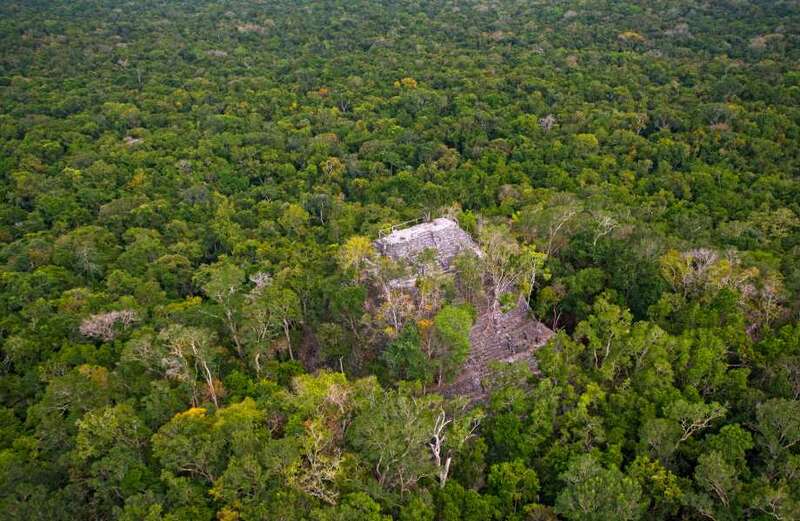BENEATH the deep jungles in the remote tangles of a Mexican peninsula lies an ancient hidden city that almost got lost in time.
Left untouched for almost 1,000 years, Ocomtún was seemingly impossible to find and its groundbreaking - and fascinating - discovery is now challenging the history we know.




A clever team of scientists led by Dr Ivan Ṡprajc were able to discover the remains of the extraordinary Maya city in 2023 after battling through vast jungles and trekking miles of dodgy hills.
But what they found next was nothing short of extraordinary.
Experts could not believe their eyes when they discovered 417 smaller cities in the area that date back to 1000 BC.
 Four human skulls wrapped in tin foil found in package going from Mexico to US
Four human skulls wrapped in tin foil found in package going from Mexico to US
But what surprised them even more was the extensive labyrinth of roadways connecting each to these cities.
Dubbed "superhighways", researchers now claim the 110 miles of maze was the "first freeway system in the world".
Mexico's National Institute of Anthropology and History (INAH) who revealed the news to the world, labelled the discovery as "monumental".
Mr Ṡprajc, who was once described as the "real-life Indiana Jones" by The Guardian, said: "The biggest surprise turned out to be the site located on a 'peninsula' of high ground, surrounded by extensive wetlands.
"Its monumental nucleus covers more than 50 hectares and has various large buildings, including several pyramidal structures over 15 metres high."
Boasting remains of several huge pyramid-like structures, three plazas with "imposing buildings" and plenty of stone columns and other cylindrical structures, the city was once home to thousands of such intricate structures.
One pyramid was even thought to be as tall as 82ft and towered over the jungle it sat in.
Plenty of lofty altars were also discovered but perhaps most interesting was an ancient sports court that researchers believe was actually used for important religious ceremonies.
The lost city was almost impossible to find, and Ṡprajc said nobody could tell where the city was located.
He told BBC Travel: "These cities had been lost to time. Nobody knew exactly where they were.
 Mexico’s sexiest fan stuns in topless bath video as she heads out for NYE night
Mexico’s sexiest fan stuns in topless bath video as she heads out for NYE night
"But [Ocomtún] was actually the last major black hole on the archaeological map of the central Maya Lowlands. There was not a single known site in an area stretching some 3,000-4,000 sq km."
Ṡprajc and his team had mapped the entire area of the Mexican peninsula using Lidar technology - an advanced form of radar that can look through vast forests with dense vegetation.
Along with the sprawling network of roads connecting the cities, researchers also found sophisticated structures believed to be used for religious and cultural ceremonies, along with advanced hydraulic systems and even an extensive agricultural infrastructure, the Washington Post reports.
"The site served as an important centre at the regional level, probably during the Classic period [250-1000 AD]," Mr Ṡprajc added.
Interestingly, scientists claim the civilization even had a well-oiled economic, political and social system.
The research team said some structures are thought to be "markets or spaces destined for community rituals" such as the sports court.
But that ultimately "only future research will shed light on the functions of these groups, which represent a regional peculiarity".
The fascinating discovery of the "far-advanced than thought" settlement is now challenging the preconceived belief that humans of the Maya civilization around that time were mere hunter-gatherers.
Richard Hansen, an American archaeologist and expert in Maya history, said: "We now know that the Preclassic period was one of extraordinary complexity and architectural sophistication, with some of the largest buildings in world history being constructed during this time."
Hansen said that the findings of these settlements were a "game-changer" when studying the history of America.
He added that the findings have unveiled a "whole volume of human history that we’ve never known".
Enrique Hernández, an archaeologist at San Carlos University who spent several months researching the lost city, said that it could turn out to be "as significant as the discovery of pyramids" - once the area is fully revealed.





































